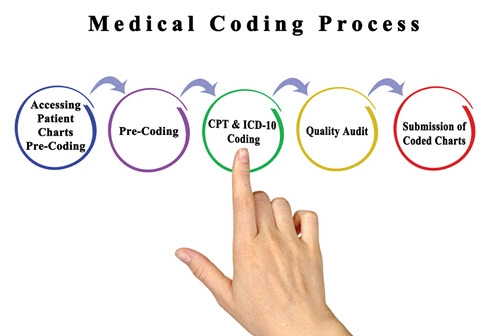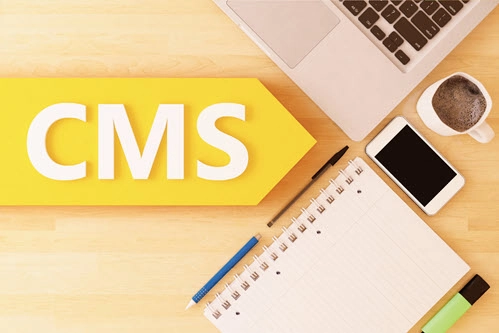Make Better Modifier 59 Habits This Year
Avoid common, costly billing errors. Payers never stop scrutinizing claims that list “separate and distinct” services, thanks to perpetually high Office Inspector General (OIG)error rates for such billing. When you have a lab claim that includes procedures that the National Correct Coding Initiative (NCCI) bundles as procedure-to-procedure (PTP) code edits, you’ll need a modifier to override the edit pair, when appropriate. Prevent paybacks for your lab claims that document separate and distinct procedures by heeding the following expert advice for potential modifier 59 (Distinct procedural service) claims. Use Most Specific Modifier Modifier 59 isn’t the only game in town. In fact, you should use 59 “only if no more descriptive modifier is available,” according to revised MLN Matters SE1418. “Before immediately appending modifier 59, always review the modifier lists for a more appropriate/specific modifier,” says Christina Neighbors, MA, CPC, CCC, coding quality auditor for Conifer Health Solutions, Coding Quality & Education Department. Pathologists: The following X{EPSU} modifiers might be more specific and appropriate than modifier 59 for a pathology claim that includes bundled services: Laboratories: Clinical labs have the same X{EPSU} modifier choices to override PTP edit pairs. But you face an additional problem when billing multiple units of a single clinical lab test, even if the clinician orders the repeat test on the same date for medical reasons. Although modifier XE may seem like the solution for lab tests taken at separate encounters, you have a more specific modifier you should use in these cases: modifier 91 (Repeat clinical diagnostic laboratory test). Modify Primary or Secondary Code If you report the two codes of a PTP edit pair for the same beneficiary on the same date of service without an appropriate modifier, your Medicare Administrative Contractor (MAC) will pay only the column 1 code. Old way: In the past, MACs would allow payment for both codes if documentation of clinical circumstances justified unbundling, but only if you appended the appropriate modifier to the column 2 code of a code pair edit. Problem: The OIG reported that 11 percent of claims incorrectly attached modifier 59 to the primary code, and 13 percent of claims attached modifier 59 to both codes of the edit pair. As a result, the OIG encouraged MACs to institute a claims edit to allow modifier 59 only on the secondary code. But CMS responded that they lacked the technical ability to implement such an edit. New way: The result is that CMS implemented a change to the claims processing system logic for modifiers 59, XE, XS, XP , and XU to allow the modifiers on column one and column two codes, effective July 1, 2019. You can read the guidance at www.cms.gov/Regulations-and-Guidance/Guidance/Transmittals/2019Downloads/R2259OTN.pdf. Focus on Separate Anatomic Site, Encounter Before you resort to modifier 59 or any related modifier, you must ensure that you have a documented clinical situation that justifies overriding an NCCI edit pair. That’s when you have documentation to “support a different session, different procedure or surgery, different site or organ system, separate incision/excision, separate lesion … not ordinarily encountered or performed on the same day by the same individual,” according to CMS at www.cms.gov/Outreach-and-Education/Medicare-Learning-Network-MLN/MLNMattersArticles/Downloads/SE1418.pdf. Use the following examples to hone your skills at picking the correct modifier in common lab scenarios: Scenario 1: Your clinical lab performs a quick lab test for influenza (87804, Infectious agent antigen detection by immunoassay with direct optical (ie, visual) observation; Influenza), which is positive. The provider then requests another test on the same day to distinguish the specific influenza type, and your lab performs 87501 (Infectious agent detection by nucleic acid (DNA or RNA); influenza virus, includes reverse transcription, when performed, and amplified probe technique, each type or subtype). Code 87804 is a column 2 code for 87501, “but you can report the bundled codes together with a modifier to override the edit pair if the lab documents a medically necessary, distinct procedure,” says William Dettwyler, MTAMT, president of Codus Medicus, a laboratory coding consulting firm in Salem, Ore. Because the second test occurs at a separate session based on the results of the initial test, you can bill both codes and append a modifier, such as XS, to one code, commonly to 87804 in this case. Scenario 2: A dermatologist wants to confirm the diagnosis of a suspicious lesion and requests a frozen section consultation from the pathologist, which leads to the provider performing Mohs surgery on the same day. Although PTP edits restrict codes such as 17313 (Mohs micrographic technique, including removal of all gross tumor, surgical excision of tissue specimens, mapping, color coding of specimens, microscopic examination of specimens by the surgeon, and histopathologic preparation including routine stain(s) (eg, hematoxylin and eosin, toluidine blue), of the trunk, arms, or legs; first stage, up to 5 tissue blocks) with 88331 (Pathology consultation during surgery; first tissue block, with frozen section(s), single specimen), you may override the edit pair using a modifier such as XP. Scenario 3: The pathologist performs a consultation on referred tissue, and performs de novo acid fast bacillus (AFB) stain on slides that they prepare from the tissue. Although there’s an NCCI edit for 88323 (Consultation and report on referred material requiring preparation of slides) and 88312 (Special stain including interpretation and report; Group I for microorganisms (eg, acid fast, methenamine silver)), you can override the edit using a modifier, such as XU, because the pathologist isn’t reviewing previously stained slides.


